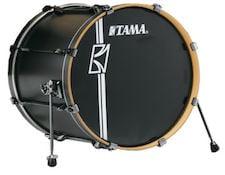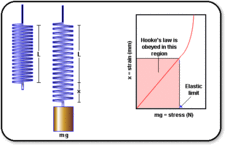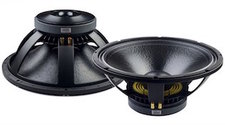It’s the time of year for saving money!
In the last installment (Part 3) of this continuing series, I wrote about why inaccuracies in a loudspeaker driver’s following of the audio signal that drives it (Either “overshoot”, which is movement beyond that required by the driving signal, or “undershoot” which is the exact opposite) contribute to “dynamic compression” of the driver’s output – the condition where an increase of 10dB in the driving signal produces a sound level less than 10 dB higher. (And is the real reason why those kick drum and other recordings you play on your system don’t “kick”) Those inaccuracies, I wrote, come about because of certain basic facts of physics: In order to make sound, the driver’s diaphragm (assuming that it has one) must move back and forth in response to a driving audio signal. That means that it must move in one direction, stop, turn around, and move again, in the other direction, over and over again as its driving signal dictates. That diaphragm, though, like all other physical objects, is subject to inertia in accordance with Newton’s First Law of Motion which says that an object at rest (not moving), will tend to STAY at rest until it is moved by some external force and an object that’s moving will tend to CONTINUE moving in the same direction and at the same speed until it’s stopped or slowed by some external force.
 Among the forces that can affect the diaphragm’s motion are the driving audio signal, which powers its motion in both directions, causing it to move when it needs to, and, by applying force opposite the original direction of travel (of reversed polarity), helping it to stop and re-start when necessary. The combined “spring” effects of the driver’s spider and surround will also resist the diaphragm’s movement in either direction AWAY FROM its center (“rest”) position and help to pull it to a stop at its limits of required motion. Finally (at least for this present article), if the driver is in “overshoot” mode (with its diaphragm still in motion after the driving signal has stopped or reversed direction) and is, because of that, acting like a generator instead of an electric motor, the amplifier’s “damping factor” can, by resisting the unwanted electrical current ― the “Back EMF” ― that it produces, help the other control factors to bring the diaphragm to a halt.
Among the forces that can affect the diaphragm’s motion are the driving audio signal, which powers its motion in both directions, causing it to move when it needs to, and, by applying force opposite the original direction of travel (of reversed polarity), helping it to stop and re-start when necessary. The combined “spring” effects of the driver’s spider and surround will also resist the diaphragm’s movement in either direction AWAY FROM its center (“rest”) position and help to pull it to a stop at its limits of required motion. Finally (at least for this present article), if the driver is in “overshoot” mode (with its diaphragm still in motion after the driving signal has stopped or reversed direction) and is, because of that, acting like a generator instead of an electric motor, the amplifier’s “damping factor” can, by resisting the unwanted electrical current ― the “Back EMF” ― that it produces, help the other control factors to bring the diaphragm to a halt.
All of these forces will, when present, act on the diaphragm, adding together algebraically to affect its movement. Not all of them are always present, though, and because some are, themselves, asymmetrical in their effect, their combined effect on the diaphragm’s movement (and on the sound produced by the driver) may also, except within a certain very limited range of diaphragm motion, be asymmetrical: For example, although the audio signal from the amplifier will be unchanged regardless of any driver-produced effect, the amplifier’s “damping factor” will only come into effect when the diaphragm of the driver is “overshooting” and producing back EMF. During “undershoot”, there’s no excess motion so there’s no “Back EMF” and nothing to resist.
Another asymmetrical effect is produced by the “spring” elements of the driver, itself: When the springs are being stretched by the diaphragm’s motion, they RESIST it, slowing the diaphragm’s rate of acceleration to follow the driving signal, and possibly even limiting its total travel before it’s forced to stop and turn around. On the way back, however, the springs’ pull actually HELPS the driving signal to accelerate and move the diaphragm as, or even more than, the driving signal requires
 While these sometimes asymmetrical forces certainly effect how a driver performs and what we hear from it, the biggest problem in getting the movement of a driver’s diaphragm to accurately follow the driving signal derives from just one single fact of physics: Although the amount of force AVAILABLE to control the diaphragm’s movement increases or decreases linearly with the strength of the incoming audio signal or the movement of the diaphragm, the amount of force NECESSARY to control it increases or decreases as THE SQUARE OF any change in the diaphragm’s velocity.
While these sometimes asymmetrical forces certainly effect how a driver performs and what we hear from it, the biggest problem in getting the movement of a driver’s diaphragm to accurately follow the driving signal derives from just one single fact of physics: Although the amount of force AVAILABLE to control the diaphragm’s movement increases or decreases linearly with the strength of the incoming audio signal or the movement of the diaphragm, the amount of force NECESSARY to control it increases or decreases as THE SQUARE OF any change in the diaphragm’s velocity.
This is because the amount of force required to keep the diaphragm’s movement controlled (to stop it or change its rate of acceleration) is determined by not one, but TWO factors: the mass of the moving parts and their velocity. And, while the mass factor (the mass of the diaphragm plus the mass of the moving parts of the spider and surround – all referred to here just as “the diaphragm”) remains essentially constant, the velocity factor increases or decreases as the SQUARE of the change in the diaphragm’s velocity. A change of either twice or half as much velocity means, therefore, that either FOUR TIMES or just ONE QUARTER as much force will be necessary to get the moving diaphragm to stop so that it can be turned around and started in the other direction.
The effect of all this is that, with the driver’s ability to mechanically control its diaphragm increasing only linearly, but the force necessary to control it increasing as the square of its change in velocity, the louder (or the higher frequency or both) a driver plays, the less likely it will be to be able to fully control its diaphragm, and THAT means that it will sound worse; that there will be greater dynamic compression; and that more signal information, particularly in the areas of dynamic “attack and decay” will be lost and never make it to your ears. . I So is this something we’re stuck with? Or is there something we can do to either fix it or minimize its effect?
Well, yes and no.
 We can improve diaphragm control by making the driver’s “motor” bigger or stronger in proportion to its moving parts. We can reduce the mass of those moving parts. We can use an array of smaller, “quicker” drivers instead of just a single larger one. We can use stronger spring elements (the spider and surround) in the driver’s construction. We can also (here it comes… wait for it…wait for it…get your typing finger limbered-up so you can immediately start pecking-out your letter of attack) use lower resistance speaker cables to take full advantage of our amplifier’s damping factor , or for that matter, we can get an amplifier with a higher damping factor to begin with, or both. And we can also either change the type or number or size of our drivers or the kind and size of the enclosure we use to house them in in an effort to reduce necessary driver travel or to increase effective diaphragm control (this last refers specifically to horns and acoustic suspension designs.)
All of these things have been tried. Most work, to one degree or another. None works perfectly. I’ll write about all of them, giving specific examples and naming names, next time.
We can improve diaphragm control by making the driver’s “motor” bigger or stronger in proportion to its moving parts. We can reduce the mass of those moving parts. We can use an array of smaller, “quicker” drivers instead of just a single larger one. We can use stronger spring elements (the spider and surround) in the driver’s construction. We can also (here it comes… wait for it…wait for it…get your typing finger limbered-up so you can immediately start pecking-out your letter of attack) use lower resistance speaker cables to take full advantage of our amplifier’s damping factor , or for that matter, we can get an amplifier with a higher damping factor to begin with, or both. And we can also either change the type or number or size of our drivers or the kind and size of the enclosure we use to house them in in an effort to reduce necessary driver travel or to increase effective diaphragm control (this last refers specifically to horns and acoustic suspension designs.)
All of these things have been tried. Most work, to one degree or another. None works perfectly. I’ll write about all of them, giving specific examples and naming names, next time.
See you then.





